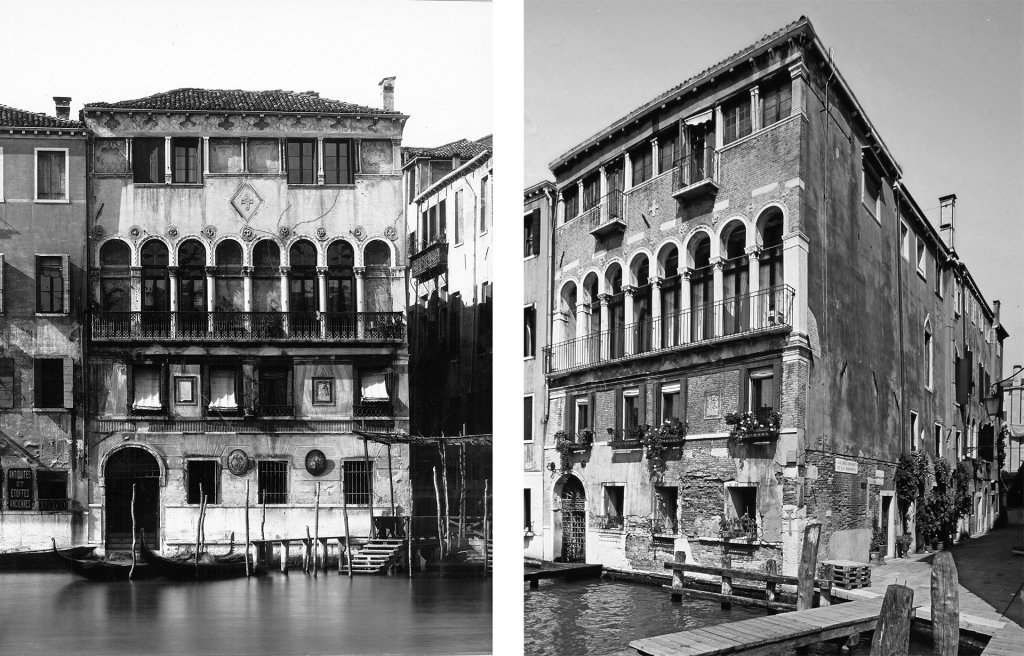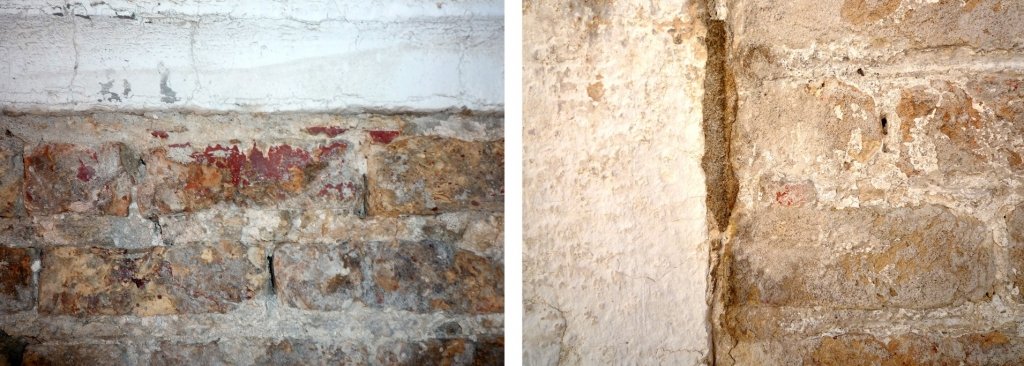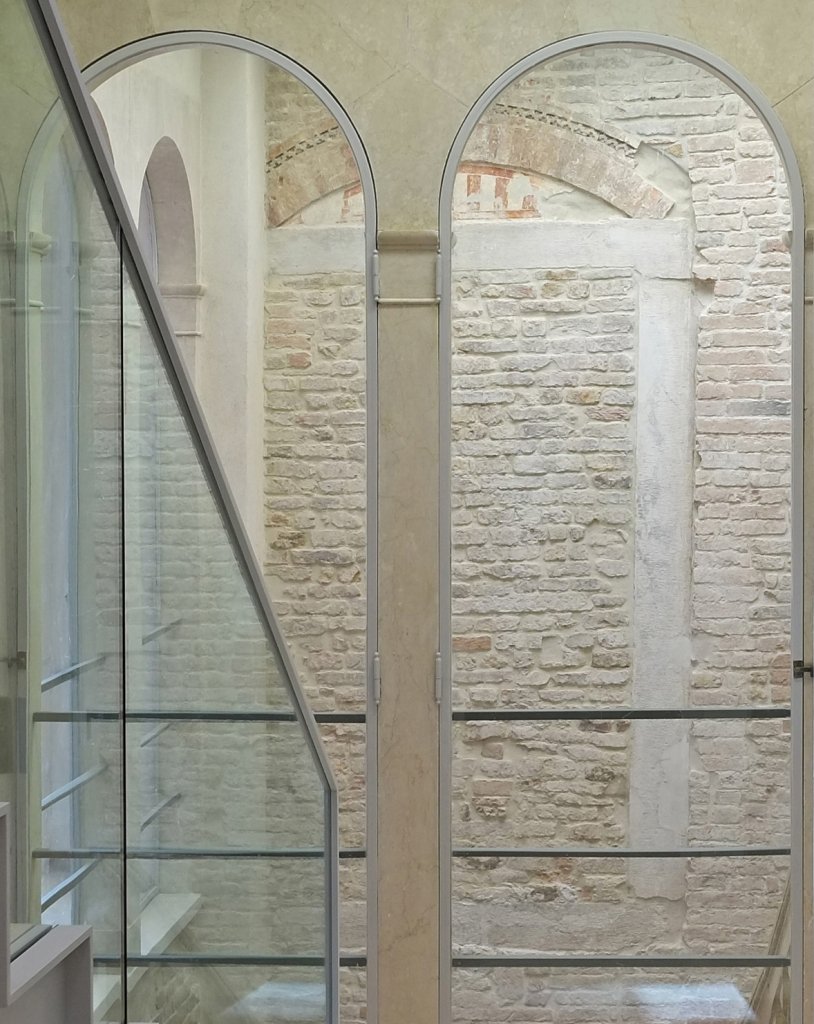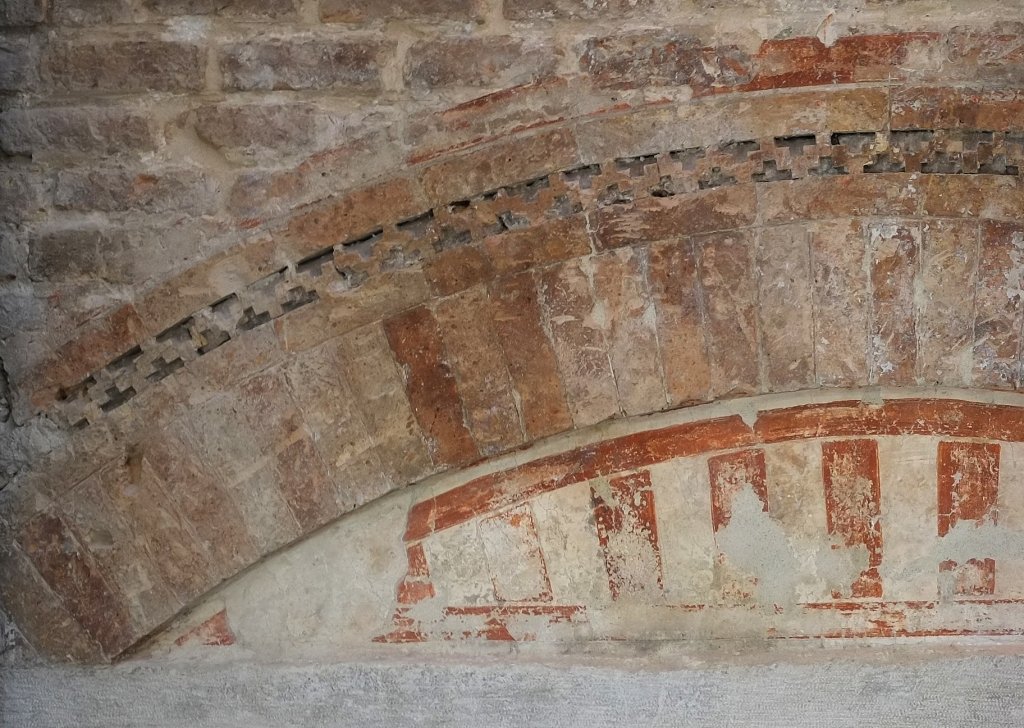
Palazzo Donà della Madonata in 1900 (photo Naya) and prior to last renovation (photo veniceteam 2010)
How were medieval constructions “finished”? Palazzo Donà della Madoneta was last restored in the 1940s, when a 19th century plaster with fake marble decoration was removed from the façade on the Grand Canal to show the “original” brick curtain wall dating back to the construction of the building sometime after 1290. The mortar joints show very carefully made incisions and one might think that this was the finish that medieval builders wanted to be seen.
When the plaster applied in the 1960s to the remaining facades was carefully removed, interesting stratifications appeared (see READING A FAÇADE) and a microscopic fragment of thin red-painted plaster gave a hint about possible decoration that had been lost over time.

Palazzo Donà della Madonata east elevation, fragments of decorations (photo veniceteam 2012)
Inside, stratigraphic analysis revealed mostly 19th/early 20thcentury decorations, as in the main staircase (former courtyard) rebuilt in this period, where coloured patterns imitating medieval wall paintings emerged (at a first glance they were taken for “original”, but further investigations showed that they were applied on industrial bricks). Since the survey revealed that the “piano nobile”, the main hall facing the Grand Canal, was formerly reached through a monumental door at the top of what must have been an outside staircase mentioned in an archive document from 1425 and that the modern finishing layer probably concealed precious information about the medieval palace, the plaster was removed.

Palazzo Donà della Madonata staircase after renovation (photo veniceteam 2012)
Once the plaster was removed, the monumental door, in line with the only pilaster of the loggia (which is otherwise made of reused, antique columns in marble from Marmara) revealed a gratifying surprise: the stone lintel is surmounted by a an arch made of carefully polished bricks with millimetric joints and a geometrical decoration carved into the bricks.

Palazzo Donà della Madonata decorated lintel (photo veniceteam 2012)
But there is even more: the bricks of the arch are covered with tiny fragments of red painted plaster the same as those already observed on the outer facades but with larger areas perfectly preserved: fake bricks painted with great care on perfectly worked and jointed bricks.
We know these decorations were frequent in the 15th and early 16th century and they are beautifully depicted on paintings of that period (see for example Carpaccio’s cycle of the Miracle of the Holy Cross, now at the Accademia Gallery) and there are fragments conserved on several façades and inside churches. A brilliant architect reused them in 1905 for his own house, the casa Torres on Rio del Gaffaro, and specialized literature calls it regalzier.
Further investigations might tell if the regalzier of Palazzo della Madoneta was added one or even two centuries after its construction or if this apparently strange taste for painting bricks on bricks persisted in Venice over several centuries.